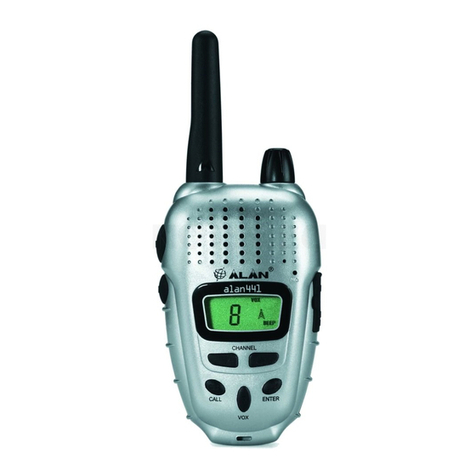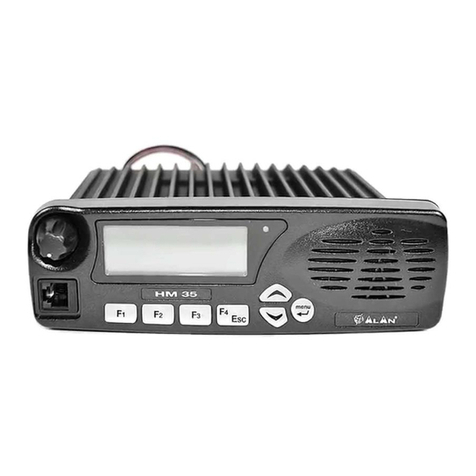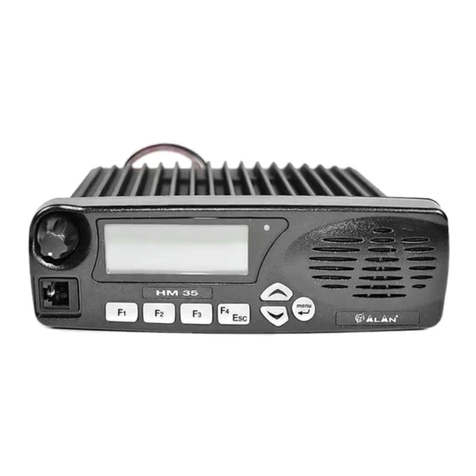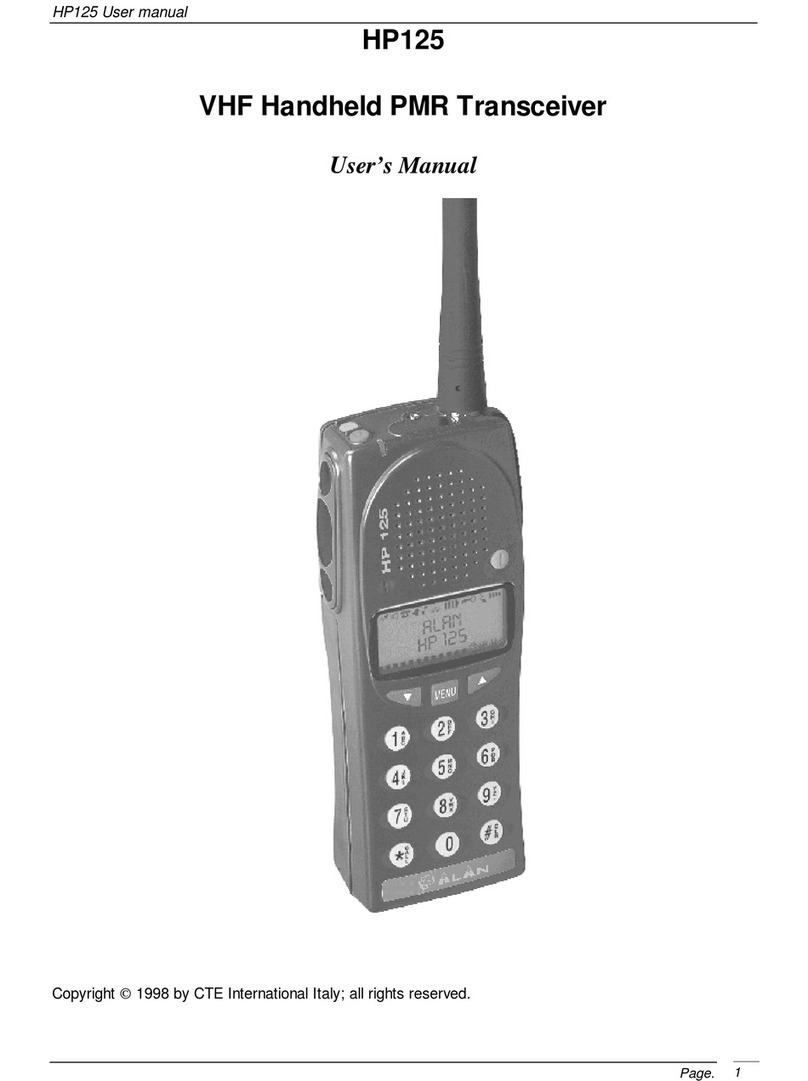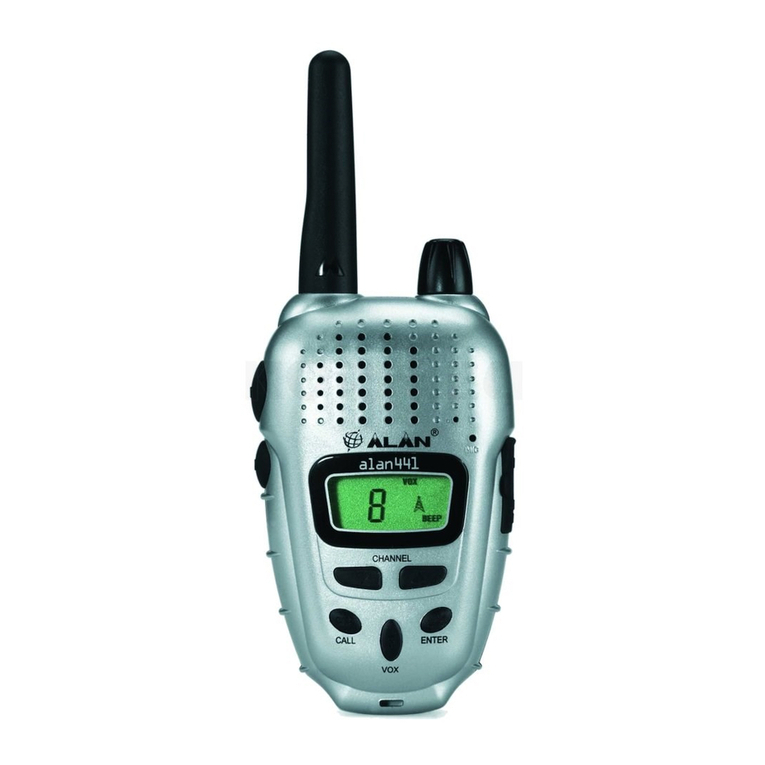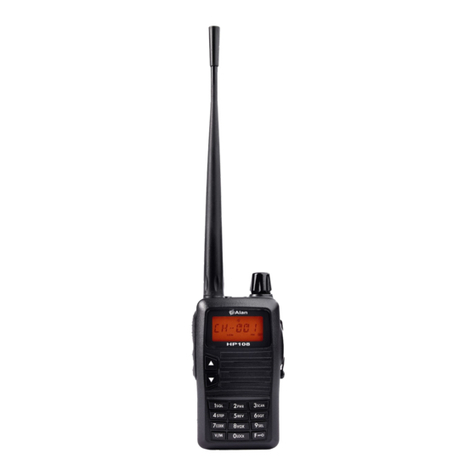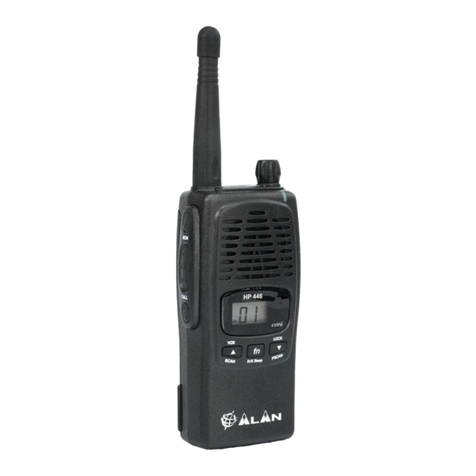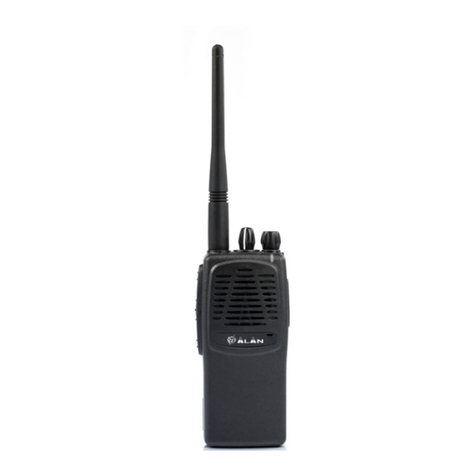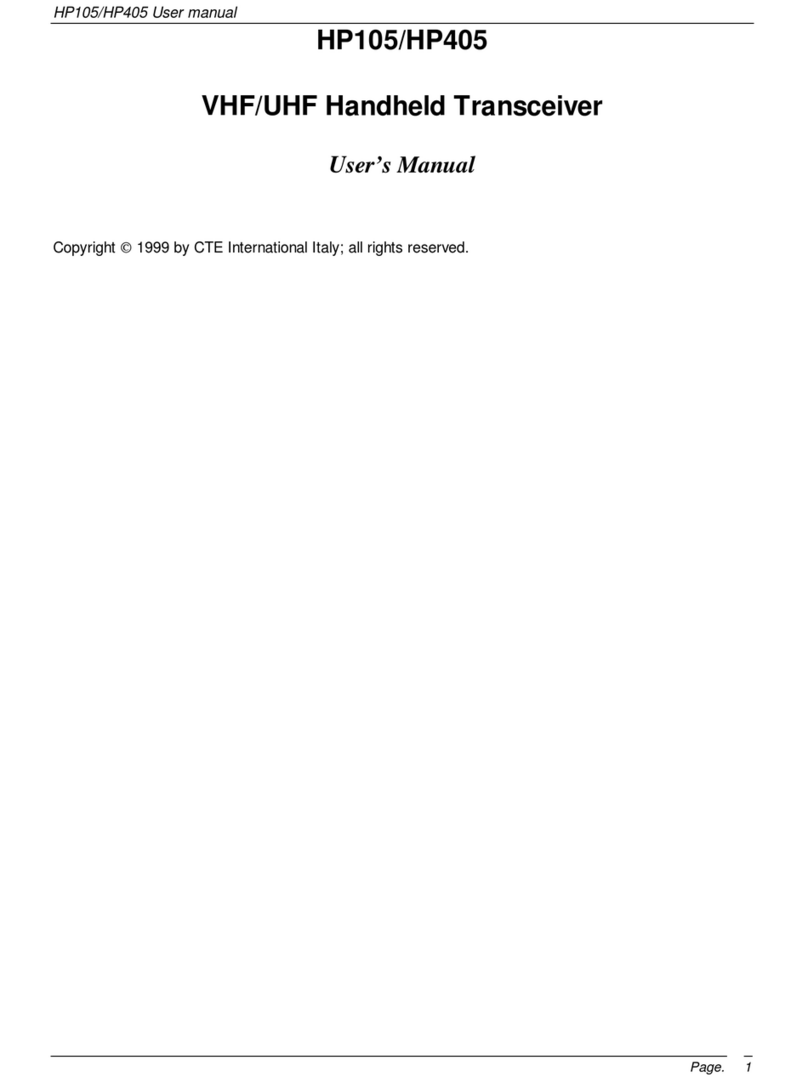
And now, let’s communicate!!
1. Insert 3 AA type alkaline or rechargeable batteries into the
battery compartment, ensuring correct polarity (+/-).
2. Rotate the ON/OFFVOLUME dial clockwise to turn the unit
on. The radio beeps 4 successive tones with different
sounds (excludible). The LCD makes a “self-test”for 1
sec., then it switches on the channel 1.
By turning this dial, you can also adjust the volume level.
Volume adjustment
To adjust the volume level, hold “MON”button down
while rotating the ON-OFF/VOLUME dial until you reach
a comfortable listening level. Rotate it clockwise to
increase and anti-clockwise to decrease the volume.
Release the “MON”button.
Now your Alan 451 is ready to receive and trasmit.
Select the desired channel by the /keys.
The receiving mode is displayed with .
Transmission: To maximize clairity, hold the radio 4/10 cm.
far from your mouth, keep pressed the PTT button and speak
into the unit (transmission icon is visible).
To receive , simply release the PTT button.
Hands-free transmission mode (VOX)/Baby-sitter
Besides PTT function (manual transmission), ALAN 451 has
built-in VOX capability (automatic transmission).
Baby-sitter: this feature is particularly useful to keep a check
of the baby at a distance, because you can automatically
listen to all sounds or noises close to the transmitter.
VOX can be adjusted in 3 positions: from L1 (highest
sensitivity) to L3 (lowest sensitivity). L1 position is
recommended in quiet sites; L3 position is ideal for operations
with microphone/loudspeaker or for room monitoring with
large background noises.
VOX Activation
Hold the button down for longer than 2 secs.
“VOX”will appear on the display to confirm the function is
active.
Speak into the microphone: the transmission will automatically
start.
To receive, stop talking.
To deactivate the VOX mode, press again the button for
more than 2 secs.
Sensitivity and RX return time settings
1) Set the ON/OFF-volume dial in OFF position by rotating
this control anti-clockwise.
2) Hold the CALL button down while turning the radio on.
8And now, let’s communicate!!
English






